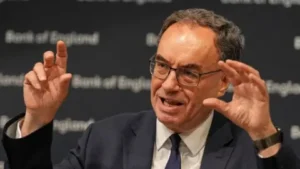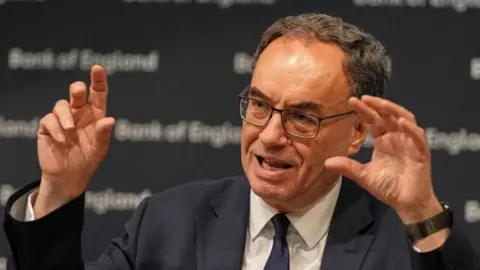The recent statements made by the Bank of England’s Governor, Andrew Bailey, suggest a potential shift in monetary policy that may impact the financial landscape of the United Kingdom. In his recent interview with the Times, Bailey expressed that the bank stands ready to implement further interest rate cuts if the job market displays signs of a slowdown. Currently, interest rates are set at 4.25%, and these rates are poised for a review during the upcoming Bank of England meeting scheduled for August 7.
Interest rates play a pivotal role in shaping the economic dynamics of everyday life—affecting mortgage repayments, credit card rates, and savings yields for millions across the UK. Bailey’s remarks underscore an optimistic outlook regarding the downward trajectory of interest rates, stating, “I really do believe the path is downward.” This statement reflects the Bank’s readiness to adapt its monetary policy in response to fluctuating economic indicators.
The governor elaborated on the UK’s economic performance, indicating that it is currently growing below its potential. This situation is creating a certain degree of “slack” within the economy, which could facilitate efforts to curb inflation levels. Notably, businesses seem to be adjusting their employment strategies and wage structures, indicated by smaller pay raises following Chancellor Rachel Reeves’ policy change that increased employers’ national insurance contributions from 13.8% to 15% as of April. This move, designed to raise approximately £25 billion annually for the government, has introduced new economic burdens on businesses, causing them to tread carefully with workforce adjustments.
Bailey’s assertion of a downward trend in interest rates comes amid concerns about inflation remaining above targets. He stressed that while the intention is to lower rates, the approach would be “gradual and careful,” acknowledging public skepticism regarding cuts when inflation remains a pressing issue. During the Bank’s last meeting in June, rates were held steady at 4.25% after experiencing two reductions earlier in the year.
The backdrop of this conversation includes concerning economic signals; the Office for National Statistics reported that the UK economy contracted by 0.1% in May, reflecting a continuation of a trend initiated in April. The downtrend was chiefly driven by decreases in manufacturing output and dismal retail sales, raising alarms about the overall health of the UK economy and placing additional pressure on the government to generate growth. The priority for policymakers has now become increasingly clear: economic revitalization is urgently needed.
As the governor and the Bank of England navigate these turbulent waters, the implications of their decisions will affect millions. The interplay between interest rate adjustments and economic performance will be closely monitored by economists, businesses, and consumers alike. Given that the UK is currently facing a myriad of economic challenges, including inflation and the effects of government fiscal policies, the upcoming meeting in August will be critical in determining the trajectory of the nation’s monetary policy.
In conclusion, as Andrew Bailey stated about the bank’s outlook for interest rates, “But we continue to use the words ‘gradual and careful’ because…” this exemplifies the cautious optimism that infuses the Bank of England’s current stance. The ongoing adjustments to employment, business strategies, and broader economic indicators suggest a complex scenario where careful calibration of interest rates will be essential. The path forward for the UK economy remains obscured, yet policymakers’ actions will undoubtedly shape the future economic environment in significant ways.









